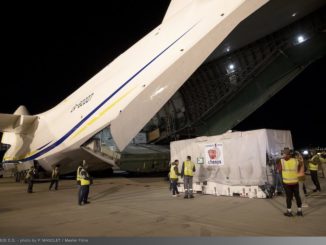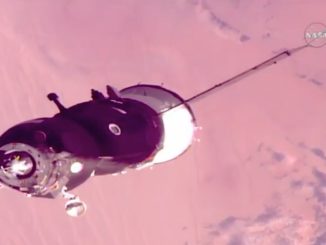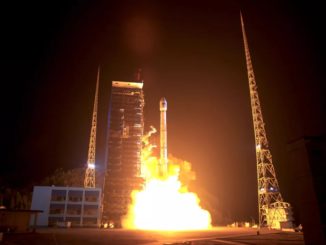STORY WRITTEN FOR CBS NEWS & USED WITH PERMISSION
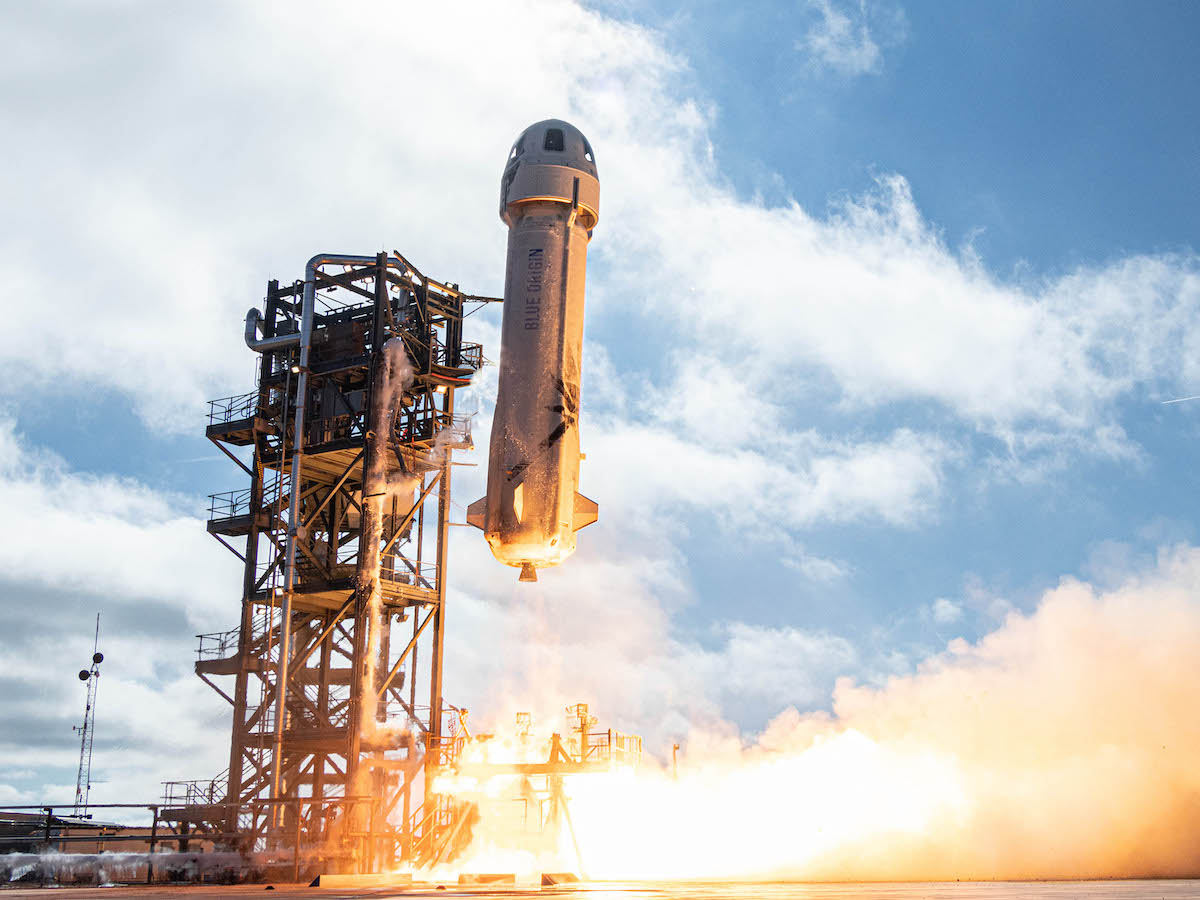
Blue Origin plans to begin piloted flights of its suborbital New Shepard spacecraft on July 20, the company announced Wednesday, launching the highest bidder in an online auction out of the atmosphere and into space for a few minutes of weightlessness and an out-of-this world view before returning to Earth.
Owned by Amazon-founder Jeff Bezos, Blue Origin made the announcement on the 60th anniversary of Alan Shepard’s sub-orbit flight to become the first American in space, scheduling the company’s first piloted flight of its New Shepard spacecraft on the 52nd anniversary of the Apollo 11 moon landing.
“We are selling the very first seat on New Shepard. And that flight will take place on July 20 of this year,” said Ariane Cornell, director of Astronaut and Orbital Sales for Blue Origin. “For all of you out there who have said I can’t wait to go to space, I’ve got some good news for you. The wait is over.”
The New Shepard capsule seats six, but in a Zoom meeting with reporters, Cornell would not say who else might accompany the winning bidder on the spacecraft’s first piloted flight, how much tickets might cost for seats on subsequent commercial missions or whether Bezos plans to blast off on this or any other near-term flight.
The July 20 flight will launch from Blue’s flight test facility near Van Horn, Texas. The company’s website will accept bids through May 19 when entries, hidden to that point, will be unsealed. Bidding will continue through June 12 when a live, online auction will determine the winner.
“All of this culminates on June 12, with a live online auction event where we will start the bidding at the highest pre-bid level,” Cornell said. “And then we will proceed through that auction and when there are no higher bids that are placed, we have found our first astronaut. It should be pretty exciting.”
Proceeds will be donated to the company’s foundation, “Club for the Future,” inspiring “the next generation as they go off and think about millions of people living and working in space … which is precisely what Blue Origin’s vision is.”
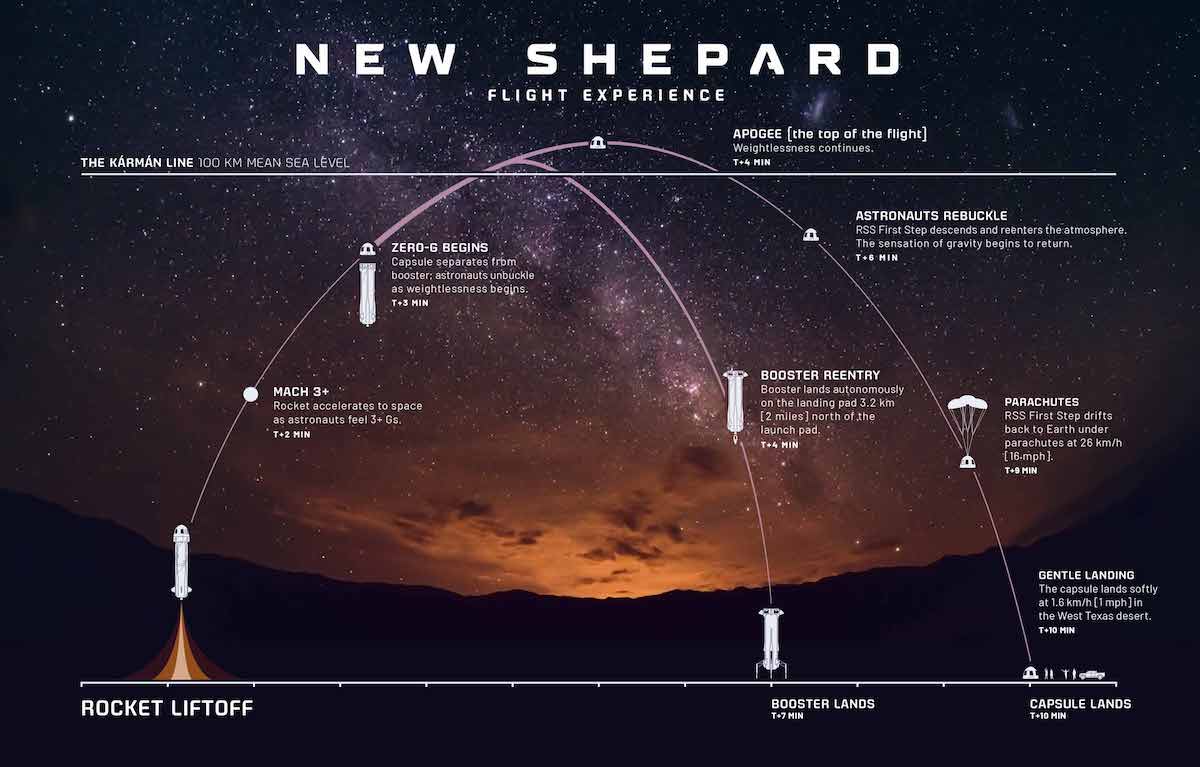
Alan Shepard and NASA’s other Mercury 7 astronauts, all experienced test pilots, faced daunting physical and psychological testing before being selected to fly in space. Sixty years later, Blue Origin passengers will face a much more relaxed standard.
Passengers must weigh between 110 and 223 pounds, stand between 5 feet and 6-feet 4-inches tall, be able to climb seven flights of stairs in less than 90 seconds (the height of the launch gantry) and be comfortable with heights.
Other requirements include being able to spend up to 90 minutes sealed inside the capsule and be able to withstand up to three times the force of gravity during launch and 5.5 “Gs” during the descent to Earth.
“We’re going to see how this program evolves,” Cornell said. “We’re going to start at these requirements and to the extent in the future that we can open up access even further, we certainly will.”
Wednesday’s announcement heats up the on-going competition between Blue Origin and Virgin Galactic, owned by entrepreneur-adventurer Richard Branson, for commercial, non-government flights to the lower edges of space carrying civilian passengers, researchers and experiments.
Virgin Galactic has built a futuristic-looking winged rocket plane that is launched from a carrier aircraft to begin its climb to sub-orbital space. Virgin has launched two piloted test flights above 50 miles with company personnel on board, but has not yet announced when it will make its first commercial flight. Whenever it flies, tickets are expected to initially cost in the neighborhood of $250,000.
Unlike Virgin’s air-launched spaceplane, New Shepard is a more traditional rocket system that launches from the ground with a single-stage booster that propels the crew capsule into the extreme upper atmosphere before falling away.
The capsule then continues upward on a ballistic trajectory, out of the discernible atmosphere and briefly into space, giving its six passengers a few minutes of weightlessness and views of the planet below through the largest windows ever built into a spacecraft.
NASA, the Federal Aviation Administration and the U.S. Air Force consider 50 miles the lower “boundary” of space while the Fédération Aéronautique Internationale, an international governing body for aviation-related sports and records, considers 100 kilometers, or 62 miles, to mark the point where the discernible atmosphere gives way to space.
Blue Origin’s New Shepard and Virgin’s spaceplane both are designed to carry passengers just beyond the 62-mile mark before falling back to Earth. Neither spacecraft has the power to reach orbital velocities.
The fully reusable New Shepard capsule features a “full envelope” abort system, a powerful rocket motor designed to propel the craft safely away from a malfunctioning booster. The abort system has been tested three times, once at ground level to simulate an on-pad abort, and twice during ascent. Overall, 15 test flights have been carried out to date.
“Safety is number one at Blue Origin, and certainly central in the design of New Shepard,” Cornell said. “That is why we have decided to test this vehicle 15 times before ever putting a person on board.”
Along with the suborbital New Shepard rockets and spacecraft, Blue Origin also is developing a powerful new engine to help boost satellites into orbit using much larger orbit-class New Glenn rockets. The engines also will be used by United Launch Alliance’s upcoming Vulcan rocket, intended to replace workhorse Atlas and Delta boosters.

